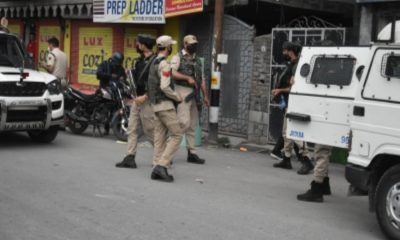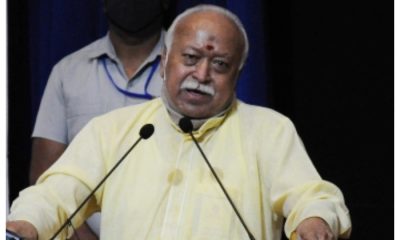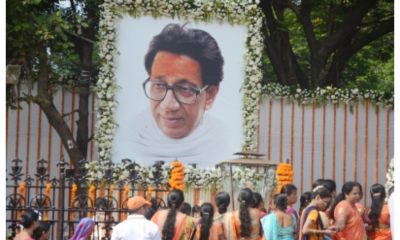Crime
Kashmir Files: A grim reminder of role of Pak ISI in ethnic cleansing of Kashmiri Pandits
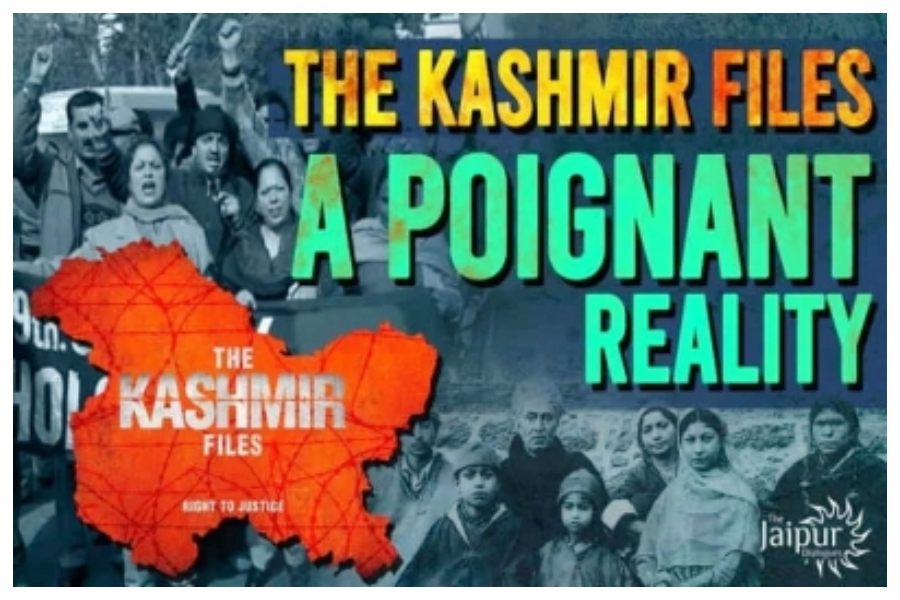
“Kashmir Files”, a documentary film, has opened many wounds that were never healed even after more than three decades. There is not only one but countless true stories narrating the genocide of Kashmiri Pandit Community in the Kashmir valley. The film depicts the tragedies inflicted upon the Kashmiri pandits by the deep state of Pakistan and their loyalist terror outfits.
Though insurgency in Kashmir began in 1987 when Congress was in power in the centre. But by 1983, Pakistani dictator Zia ul Haq was fully prepared for covert operations against India, first in Punjab and subsequently in Kashmir. Zia’s policy laid down the foundation of Jihad. He believed that the Kashmir dispute would be solved in the context of an Islamic government in Afghanistan, a jihad in Kashmir and an uprising in Punjab in India. The late 1980s saw Islamic fundamentalism taking roots in the valley as a sequel to General Zia’s seminal strategy which intended to incite the locals into militancy. Zia was adamant to make Kashmir an Islamic issue and his policy spurred support of Pakistan’s fundamentalist parties and their loyalists in the Pakistani army and Inter-Services Intelligence (ISI).
Pakistan’s involvement in Afghanistan was an apprenticeship for its low intensity conflict in Kashmir. The cash, arms and ammunition provided by the US and channelled through the ISI found its way to the Pakistani arms market and finally to the radical organisations.
The withdrawal of the Soviet Union and later its disintegration convinced the Pakistani establishment regarding the capabilities of the well organised “jihadi” groups. Pakistan’s strategy was to engage them in a low- intensity conflict in Kashmir with rewarding results. Armed with sophisticated weapons and cash from the US, motivated through religious indoctrination and convinced about their dedication to the cause of Islam and their ultimate victory, this new breed of Islamic jihadis emerged as a new tool to execute the foreign policy objectives of Pakistani military establishment. It wanted to achieve Pakistan’s objective of inflicting damage to India. According to the Pakistani strategy, this would also succeed in internationalising the Kashmir issue and keep India under the pump.
Zia died in a plane crash in 1988 but under the tenure of Benazir Bhutto, the Pakistani army and ISI kept executing its own Kashmir agenda as usual.
In his book “Shadow War: The untold story of jihad in Kashmir”, Pakistani journalist Arif Jamal gives a detailed reports about how plans were discussed in Kathmandu on January 4, 1990. While pro-jihadi participants voiced concerns over the growing influence of the Jammu and Kashmir Liberation Front (JKLF) at the meeting, the founding leader of Jamat opposed direct involvement as it would destroy the organization and open it to an Indian security assault.
It was at this ISI sponsored meeting that pro-Pakistan separatist Syed Ali Shah Geelani suddenly appeared and made a passionate plea for openly supporting jihad in Kashmir. According to Jamal, that all the factions thereon supported jihad in Kashmir after this decisive meeting.
After consolidation, the ISI selected terrorist organisations to promote the next agenda – ethnic cleansing in Kashmir.
The diabolic project began with the targeting of Hindus in late 1989. The first to be killed was Pandit Tika Lal Taploo, a prominent leader of the Kashmiri Hindu Pandit community. Four months later, on 4January1990, Aftab, a local Urdu newspaper in Srinagar ran a press release issued by the Pakistan based terrorist outfit Hizbul Mujahideen, proclaiming jihad and asking all Hindus to leave the valley. Walls were plastered with posters asking Hindus to leave Kashmir, Hindu homes were dotted red and Hindu women were forced to sport marks on their foreheads (tilak); masked men with Kalashnikovs roamed the streets forcing people to reset their watches and clocks to Pakistan Standard Time.
With each passing day of January 1990, the tension mounted. Then on 19 January 1990, dubbed as the Kristallnacht of the Kashmiri Hindu Pandit community, the pressure reached its zenith. As dusk approached and Hindu families, women and children included, cowered inside their homes, behind the false security of their doors, outside the spine-chilling exhortations to leave the valley became louder and shriller. The muezzin’s routine calls to the Islamic faithful from mosque tops was replaced by three taped slogans that resonated throughout the cold January night asking Hindus to convert and follow the Shariat if they wanted to stay in Kashmir or to leave their wives and daughters behind.
Grabbing just what they could carry, uprooted Kashmiri Pandits were forced to leave the valley, leaving behind their ancestral homes.
All in all, according to IDMC (Internal Displacement Monitoring Center of the Norwegian Refugee Council) 350,621 Kashmiri Pandits or 90% of the Kashmiri Pandits who were living in the valley fled Kashmir.
According to a report by Shishir Gupta, Executive Editor, Hindustan Times, “the pattern on killings of Kashmiri Pandits by terrorists shows that the bulk of targeted attacks took place in 1990 with the onset of jihadi terrorism in the Valley. Subsequent killings dramatically dropped not because of a change in the intent of the Pak sponsored terror campaign but because the adversary had achieved their strategic goal-pogrom to cleanse the Valley”.
“The Pandits were killed primarily with the sinister jihadi agenda to establish Nizam-e-Mustafa in the Valley as part of a pogrom, the majority community were mostly killed as collateral damage during maintenance of law and order, encounters with terrorists, during grenade and IED attacks in the Valley. A considerable number were also targeted for variety of reasons ranging from suspected informers, refusing diktats of terror commanders related to women, money, or property as also terrorists taking sides and settling local disputes related to personal enmity,” writes Gupta quoting a senior Kashmir police officer.
“Although the Pakistani deep state is responsible for destroying communal cohesion in Kashmir in the 1990s, it was Islamabad’s then friend, the US, which failed to recognize terrorism in Kashmir till the J&K Assembly attack on October 1, 2001. Throughout the entire 1990s, the Valley was all about human rights with the US State Department and western media and their proxies in the Valley batting for Rawalpindi GHQ in the international fora and pinning down India on so-called violation of human rights. The US definition in the Valley changed from freedom fighter to militant to terrorist after the 9/11 attacks and the December 13, 2001, attack on the Indian Parliament,” says the report.
Things are changing for betterment since August 5, 2019 when Jammu and Kashmir was declared a Union Territory after article 370 was abrogated. Though the terror incidents have come down effectively but Pakistan is still trying to radicalise the local Kashmiri youth. Majority of Kashmiri pandits are still scared of going back to the valley, leaving their “settled” lives elsewhere. The Indian security agencies are on alert after the humiliating withdrawal by the US last year leaving sophisticated weapons worth billions of dollars with the Taliban in Afghanistan. There are apprehensions that the Taliban “affiliated” all Sunni Pakistani terror outfits may once again try to revive militancy in Kashmir.
“It is not the 1980s and this time Pakistan has been getting a taste of its own recipe. Baloch, TTP, ISIS all want their ‘booties, “says one intelligence officer adding, “but we can’t lower our guard.”
Crime
Navi Mumbai Police Seize Drugs Worth Rs 21 Lakh, Nigerian National Arrested
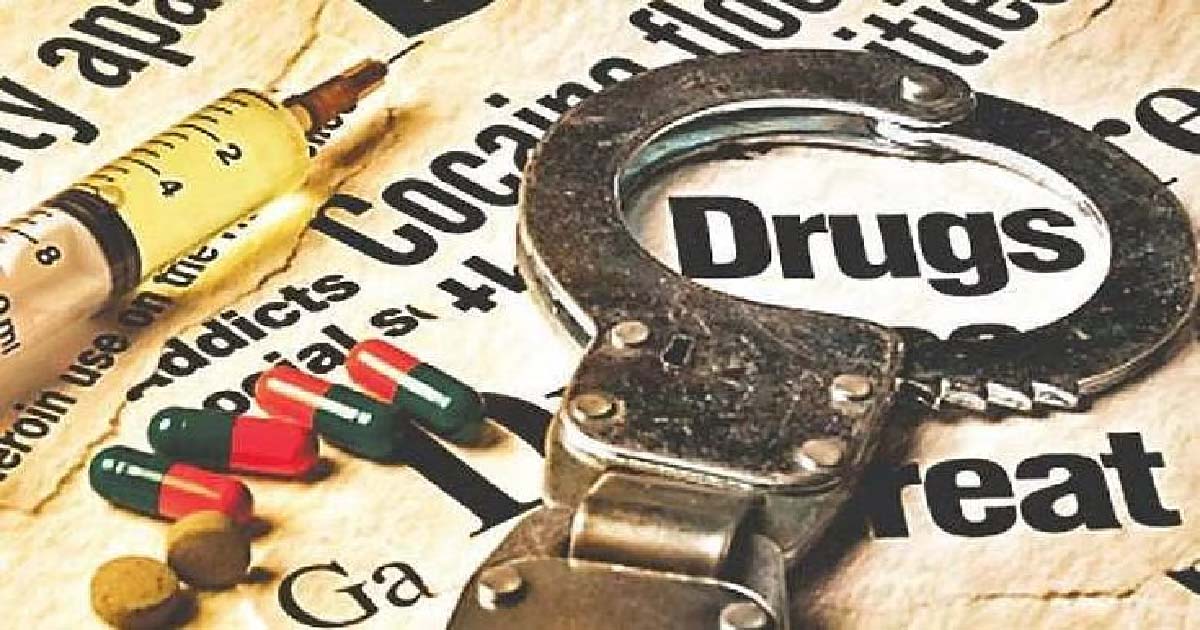
The Navi Mumbai Police have seized drugs worth over Rs 21 lakh, including mephedrone and MDMA, and arrested a Nigerian national in connection with the case, officials said on Wednesday.
The seizure followed a routine police patrol carried out on December 15 along Palm Beach Road. A team noticed a foreign national standing suspiciously near a parked scooter late at night. When the police approached him for questioning, the man abandoned the vehicle and fled the spot, raising further suspicion.
Upon checking the scooter, the police recovered 70 grams of mephedrone powder, estimated to be worth nearly Rs 17 lakh. In addition, 120 MDMA tablets were also found during the initial search, an official release stated.
Following the recovery, police launched a search operation to trace the suspect. He was later arrested from his residence in Koparkhairane. During a subsequent search of the premises, police recovered additional quantities of drugs, including mephedrone powder worth around Rs 4 lakh and 40 purple MDMA tablets.
While the combined value of the seized mephedrone powder has been estimated at over Rs 21 lakh, the police did not specify the market value of the MDMA tablets recovered during the operation.
The accused has been identified as Aniehe Kingsley Chinedu, also known as Aney Kingsley Chinedu. He is a Nigerian national and has been booked under relevant sections of the Narcotic Drugs and Psychotropic Substances Act.
Police officials said further investigations are underway to determine the source of the drugs and to identify possible links to a larger drug supply network operating in the region. Authorities are also examining whether the accused was involved in drug distribution across Navi Mumbai and neighbouring areas.
The Navi Mumbai Police said such operations would continue as part of ongoing efforts to curb drug trafficking and ensure public safety.
Crime
Mumbai: Mazgaon Court Stenographer Held For Demanding ₹15 Lakh Bribe, Approaches Special ACB Court For Bail

Mumbai: The stenographer posted at court at Mazgaon, Chandrakant Vasudev, was arrested allegedly for demanding and accepting bribes allegedly on behalf of the Additional Sessions Judge, Civil Sessions Court, Court No. 14, Mazagon. Aejazuddin S. Kazi has again approached the special ACB court for bail. The plea is likely to be heard on Thursday.
Vasudev was arrested on November 10 for allegedly accepting a bribe of Rs 15 lakh in exchange for a favourable verdict in a land dispute case. The special court rejected his first bail plea on November 24. A second bail plea claims no need for further incarceration and investigation can proceed without detaining him.
The prosecution claims Vasudev told the agency that Kazi had instructed him to demand the bribe, and after accepting the amount, Kazi asked him to bring it to his residence. It allegedly started on September 09 when Vasudev told the complainant’s associate in the court washroom to “do something for Saheb (the Judge), and the order will be in your favour”. He later demanded Rs 10 lakh for himself and Rs 15 lakh for the judge at a café. After refusal, he threatened via WhatsApp.
Crime
Mumbai Emerges As Main Hotspot For Gold Smuggling Through Airports: DRI Report
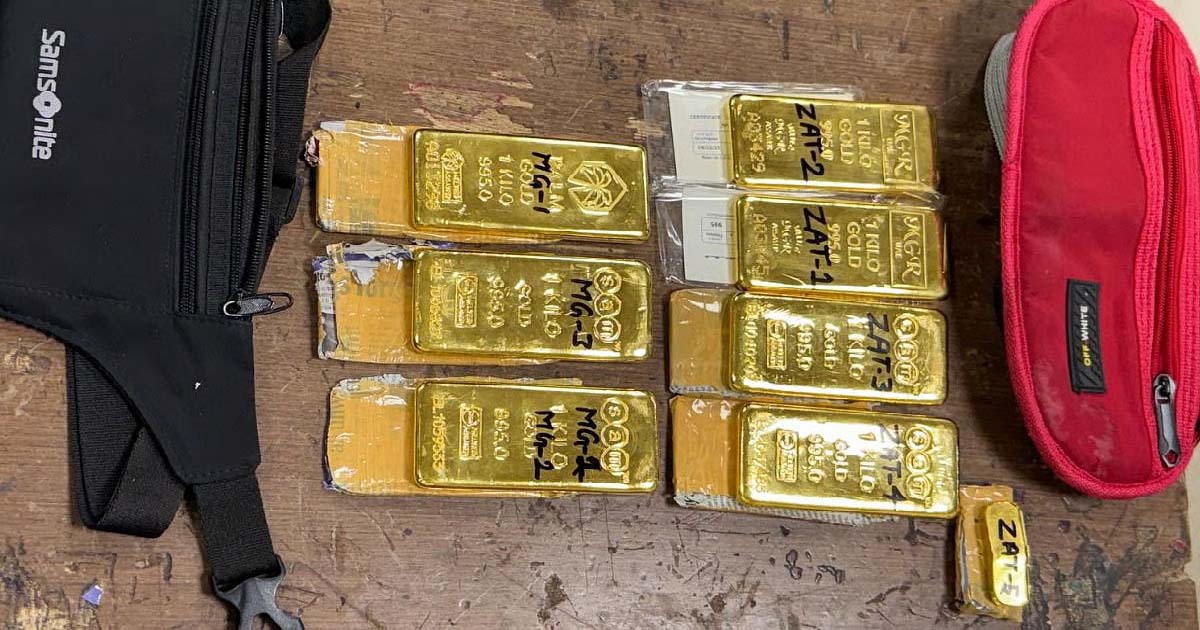
Mumbai: The Directorate of Revenue Intelligence, in its report, stated that gold smuggling in the year 2024–25 remained concentrated in hotspots like Maharashtra, Tamil Nadu, Gujarat and West Bengal, serving as entry points or redistribution hubs due to their strategic location, higher number of flights and transit routes.
In 2024–25, the DRI seized 1,073 kg of gold having a market value of approximately Rs 785 crore, the report stated. Mumbai emerged as the main hotspot for gold smuggling through airports, far surpassing all other locations in both the quantity of gold seized and the number of cases detected, the agency stated in its report.
According to the DRI, gold smuggling syndicates operate through a structured network: masterminds located abroad or in India fund operations, organisers recruit carriers, carriers transport concealed gold into India, and handlers receive gold for delivery to key members of the network in India for further sale.
Sometimes, gold smuggled in forms other than foreign-origin bars, such as wax or jewellery, is melted into 24-carat bar form at illicit facilities, sold domestically, converted into jewellery and integrated into domestic markets. Proceeds are usually repatriated abroad via hawala or illegal forex channels, sustaining a multi-layered, highly networked smuggling operation.
“Air routes, especially flights from the Middle East and Southeast Asia that connect to metro and Tier-II airports, are the primary channel for gold smuggling into India. Smugglers exploit diverse passenger profiles, including women, families and airline crew, to smuggle gold into India. Increasingly, smugglers are also concealing gold inside aircraft cavities for later retrieval by crew, passengers or airport staff. Sometimes, gold concealed in the aircraft during the international leg is retrieved by passengers during the domestic leg of the aircraft. Further, transit passengers smuggle gold via body concealment and hand it over to airport staff,” the report stated.
“A more sophisticated and dangerous method involves concealing gold inside the human body. Syndicates mould gold in wax form into small capsules, which are then inserted into body cavities to evade detection by scanners and manual checks. This trend reflects a growing shift towards high-risk concealment techniques that endanger the carrier’s health,” stated the report.
“The gender profile of gold smuggling carriers for 2024–25 revealed that the majority of individuals apprehended were male. However, the presence of women, making up one-tenth of the persons apprehended, highlights a growing trend of female involvement, possibly due to perceptions of lower suspicion during checks. The domicile profile of gold smuggling carriers in 2024–25 indicates that the overwhelming majority were Indian nationals, which highlights the dominance of domestic carriers in gold smuggling. Carriers from Kenya and Iran contributed modestly, with isolated cases involving carriers from Thailand, Turkey, Afghanistan, Oman, the UAE and the USA,” the report further stated.
-

 Crime3 years ago
Crime3 years agoClass 10 student jumps to death in Jaipur
-

 Maharashtra1 year ago
Maharashtra1 year agoMumbai Local Train Update: Central Railway’s New Timetable Comes Into Effect; Check Full List Of Revised Timings & Stations
-

 Maharashtra1 year ago
Maharashtra1 year agoMumbai To Go Toll-Free Tonight! Maharashtra Govt Announces Complete Toll Waiver For Light Motor Vehicles At All 5 Entry Points Of City
-

 Maharashtra1 year ago
Maharashtra1 year agoFalse photo of Imtiaz Jaleel’s rally, exposing the fooling conspiracy
-

 National News1 year ago
National News1 year agoMinistry of Railways rolls out Special Drive 4.0 with focus on digitisation, cleanliness, inclusiveness and grievance redressal
-

 Maharashtra1 year ago
Maharashtra1 year agoMaharashtra Elections 2024: Mumbai Metro & BEST Services Extended Till Midnight On Voting Day
-

 National News1 year ago
National News1 year agoJ&K: 4 Jawans Killed, 28 Injured After Bus Carrying BSF Personnel For Poll Duty Falls Into Gorge In Budgam; Terrifying Visuals Surface
-

 Crime1 year ago
Crime1 year agoBaba Siddique Murder: Mumbai Police Unable To Get Lawrence Bishnoi Custody Due To Home Ministry Order, Says Report



